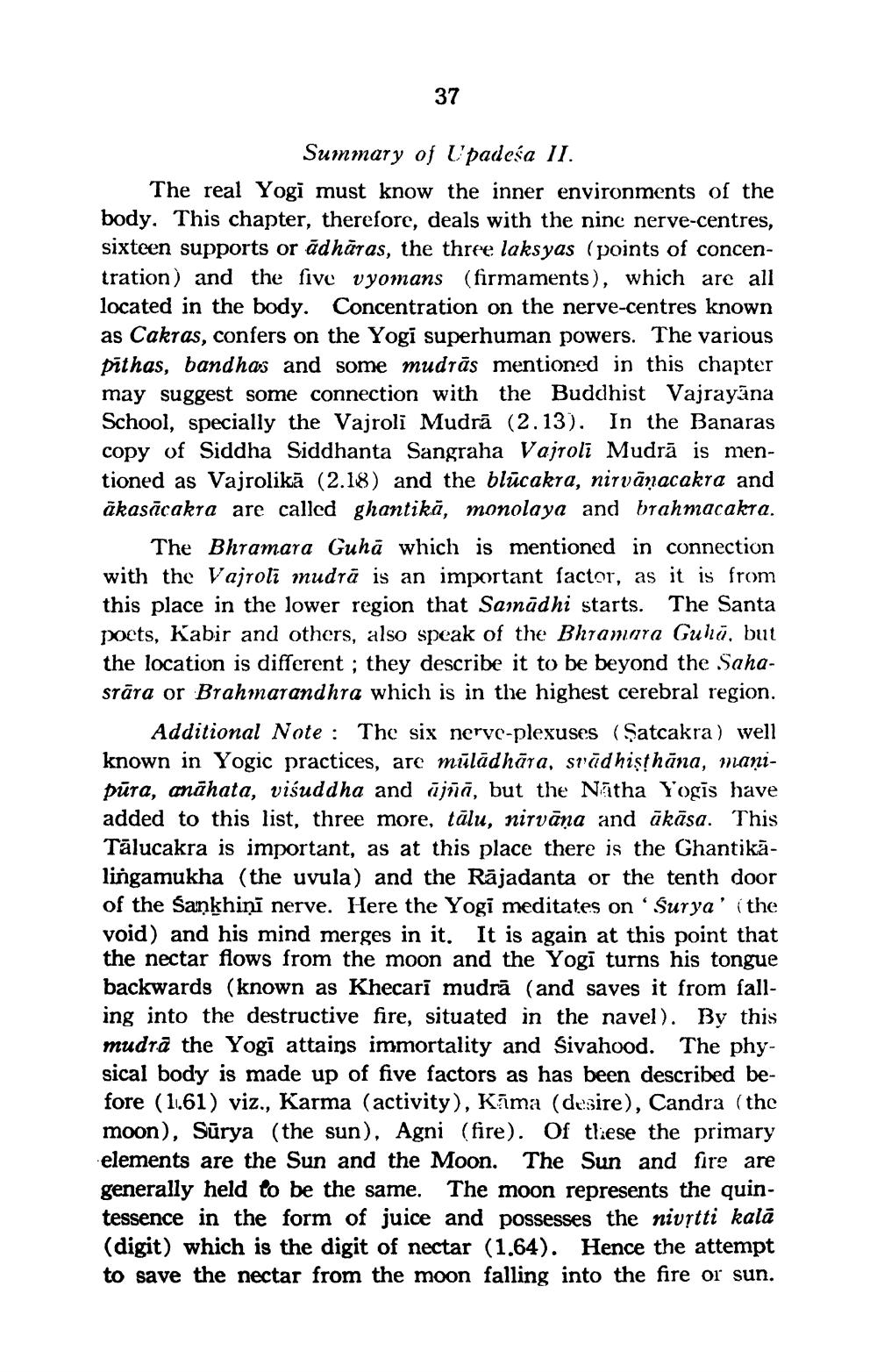________________
37
Summary of Upadeśa II. The real Yogi must know the inner environments of the body. This chapter, therefore, deals with the nine nerve-centres, sixteen supports or ādhāras, the three laksyas (points of concentration) and the five vyomans (firmaments), which are all located in the body. Concentration on the nerve-centres known as Cakras, confers on the Yogi superhuman powers. The various pithas, band has and some mudrās mentioned in this chapter may suggest some connection with the Buddhist Vajrayana School, specially the Vajroli Mudrā (2.13). In the Banaras copy of Siddha Siddhanta Sangraha Vajroli Mudrā is mentioned as Vajrolikā (2.18) and the blūcakra, nitvānacakra and äkasācakra are called ghantikā, monolaya and brahmacakra.
The Bhramara Guhā which is mentioned in connection with the Vajroli mudrā is an important factor, as it is from this place in the lower region that Samādhi starts. The Santa poets, Kabir and others, also speak of the Bhramara Gukü, but the location is different ; they describe it to be beyond the Sahastāra or Brahmarandhra which is in the highest cerebral region.
Additional Note : The six nerve-plexuses (Satcakra) well known in Yogic practices, are mulādhāra, stādhisthāna, manipūra, anahata, viśuddha and ūjñā, but the Natha Yogis have added to this list, three more, tālu, nitvāna and ākāsa. This Tālucakra is important, as at this place there is the Ghantikālingamukha (the uvula) and the Rājadanta or the tenth door of the Sankhiņi nerve. Here the Yogi meditates on 'Surya' (the void) and his mind merges in it. It is again at this point that the nectar flows from the moon and the Yogi turns his tongue backwards (known as Khecari mudrā (and saves it from falling into the destructive fire, situated in the navel). By this mudra the Yogi attains immortality and Sivahood. The physical body is made up of five factors as has been described before (1161) viz., Karma (activity), Kāma (desire), Candra (the moon), Sürya (the sun), Agni (fire). Of tliese the primary elements are the Sun and the Moon. The Sun and fire are generally held to be the same. The moon represents the quintessence in the form of juice and possesses the nivịtti kala (digit) which is the digit of nectar (1.64). Hence the attempt to save the nectar from the moon falling into the fire or sun.




